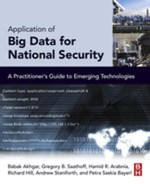Ackerman S. CIA’s Brutal and Ineffective Use of Torture Revealed in Landmark Report [Online]. The Guardian; 2014. http://www.theguardian.com/us-news/2014/dec/09/cia-torture-report-released [accessed 09.12.2014].
American Libraries Magazine. FBI Seizes Library Computers; Anthrax-case Link Suspected [Online]. American libraries magazine; August 6, 2008. http://www.americanlibrariesmagazine.org/archive/2008/august2008/anthraxcomputersseized [accessed 09.08.2014].
American Psychological Association (APA). Policy related to psychologists’ work in national security settings and reaffirmation of the APA position against torture and other cruel, inhuman, or degrading treatment or punishment. In: Council Policy Manual. 2013 [Online]. Available from. http://www.apa.org/about/policy/national-security.aspx [accessed 06.09.2014].
boyd D, Crawford K. Critical questions for big data. Information, Communication & Society. 2012;15(5):662–679.
Chaski C.E. Who’s at the keyboard: authorship attribution in digital evidence investigations. International Journal of Digital Evidence. 2005;4(1).
Chessick R.D. Hermeneutics for Psychotherapists. American Journal of Psychotherapy. 1990;44(2):256–273.
Clement T. Text analysis, data mining, and visualizations in literary scholarship. In: Price K, Siemens R, eds. Literary Studies in a Digital Age: A Methodological Primer. New York: MLACommons; 2013.
CNN. Transcript of Powell’s U.N. Presentation—Part 5: Biological Weapons Program. CNN; Wednesday 5 February 2003 [Online]. Available from. http://edition.cnn.com/2003/US/02/05/sprj.irq.powell.transcript.05/ [accessed 24.08.2014].
Data & Society Research Institute. Event Summary: The Social, Cultural, & Ethical Dimensions of “Big Data. Data & Society Research Institute; 2014 Available from. http://www.datasociety.net/pubs/2014-0317/BigDataConferenceSummary.pdf.
Drucker J. Humanities approaches to graphical display. Digital Humanities Quarterly. 2011;5(11).
George G, Haas M.R, Pentland A. Big data and management. Academy of Management Journal. 2014;57:321–326 ISSN:0001-4273.
Gold M.K, ed. Debates in the Digital Humanities. Minneapolis: University of Minnesota Press; 2012.
Grimmer J, Stewart B.M. Text as data: the promise and pitfalls of automatic content analysis methods for political texts. Political Analysis: Oxford Journals. 2013 doi: 10.1093/pan/mps028.
Juola P. Authorship attribution. Foundations and Trends in Information Retrieval. 2006;1(3):233–334. doi: 10.1561/1500000005.
Juola P. The rowling case: a proposed standard analytic protocol for authorship questions. In: Digital Humanities 2014. 2014 Lausanne, Switzerland.
Kuhlau F, et al. Taking due care: moral obligations in dual use research. Bioethics. 2008;22(9):477–487. doi: 10.1111/j.1467-8519.2008.00695.x.
Lennon B. The digital humanities and national security. differences: A Journal of Feminist Cultural Study. 2014;25(1):132–155.
Lichtblau E. Scientist Officially Exonerated in Anthrax Attacks. New York Times; August 08, 2008 [Online]. Available from. http://www.nytimes.com/2008/08/09/washington/09anthrax.html [accessed 09.08.2014].
Liu B. Sentiment analysis and subjectivity. In: Indurkhya N, Damerau F.J, eds. Handbook of Natural Language Processing. second ed. 2010.
Moretti F. Graphs, Maps, Trees: Abstract Models for a Literary History. London: Verso Books; 2005.
Moretti F. Distant Reading. London: Verso Books; 2013.
Mosteller F, Wallace D. Inference and Disputed Authorship: The Federalist Papers. Reading, MA: Addison-Wesley; 1964.
National Research Council. Review of the Scientific Approaches Used During the FBI’s Investigation of the 2001 Anthrax Letters. Washington, DC: The National Academies Press; 2011.
Nowviskie B. Algorithm. In: Emerson L, Robertson B, Ryan M.-L, eds. The Johns Hopkins Guide to Digital Media. Baltimore: The Johns Hopkins University Press; 2014.
Nowviskie B. Ludic algorithms. In: Kee K, ed. PastPlay: Teaching and Learning History with Technology. Ann Arbor: University of Michigan Press; 2014.
Nunan D, Di Domenico M. Market research and the ethics of big data. International Journal of Market Research. 2013;55(4):2–13.
Pallen M.J, Wren B.W. Bacterial pathogenomics. Nature. 2007;449:835–842. doi: 10.1038/nature06248.
Pasternack A. In Our Google Searches, Researchers See a Post-Snowden Chilling Effect, Motherboard. 2014 [Online]. Available from. http://motherboard.vice.com/read/nsa-chilling-effect [accessed 01.09.2014].
Saathoff G, DeFrancisco J. The amerithrax case: report of the expert behavioral analysis panel. In: Research Strategies Network. August 2010.
Sculley D, Pasanek B. Meaning and mining: the impact of implicit assumptions in data mining for the humanities. Literary and Linguistic Computing. 2008;23(4):409–424.
Shaw E.,D, Fischer L.F, Rose A.,E. Insider Risk Evaluation and Audit Technical Report 09-02. United States Department of Defense; 2009 Available from. http://www.dhra.mil/perserec/reports/tr09-02.pdf [accessed 01.09.2014].
Silowash G, Cappelli D, Moore A, Trzeciak R, Shimeall T, Flynn L. Common Sense Guide to Mitigating Insider Threats 4th Edition (Technical Report CMU/SEI-2012-TR-012). Software Engineering Institute, Carnegie Mellon University; 2012 Available from. http://resources.sei.cmu.edu/library/asset-view.cfm?AssetID=34017 [accessed 01.09.2014].
Somerville M, Atlas R. Ethics: a weapon to counter bioterrorism. Science. 2005;307(5717):1881–1882.
Tufte E. Visual Explanations: Images and Quantities, Evidence and Narrative. Cheshire, CT: Graphics Press; 1997.
Tufte E. The Visual Display of Quantitative Information. Second ed. Cheshire, CT: Graphics Press; 2001.
The United States Department of Justice (DOJ). Amerithrax Investigative Summary. The United States Department of Justice (DOJ); February 19, 2010 Available from. http://www.justice.gov/archive/amerithrax/docs/amx-investigative-summary.pdf [accessed 09.08.2014].
United States Federal Bureau of Investigation (FBI). FBI and Justice Department Response to NAS Review of Scientific Approaches Used During the Investigation of the 2001 Anthrax Letters. 2011 [Online] Available from. http://www.fbi.gov/news/pressrel/press-releases/fbi-and-justice-department-response-to-nas-review-of-scientific-approaches-used-during-the-investigation-of-the-2001-anthrax-letters [accessed 06.09.2014].
Weisman S.R. Powell Calls His U.N. Speech a Lasting Blot on His Record. New York Times; Friday 9 September 2005 [Online]. Available from. http://www.nytimes.com/2005/09/09/politics/09powell.html [accessed 24.08.2014].
Williford C, Henry C. One Culture: Computationally Intensive Research in the Humanities and Social Sciences: A Report on the Experiences of First Respondents to the Digging into Data Challenge. Washington, DC: Council on Library and Information Resources; 2012 Available from. http://www.clir.org/pubs/reports/pub151 [accessed 06.09.2014].
